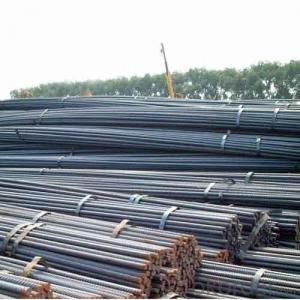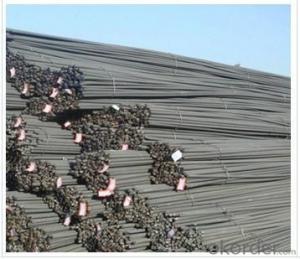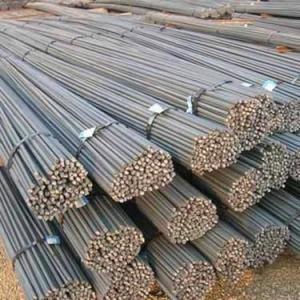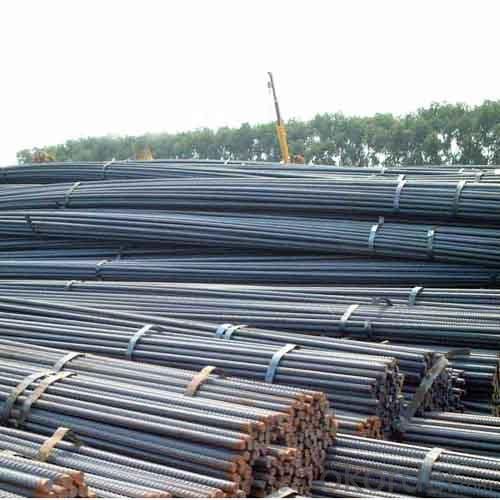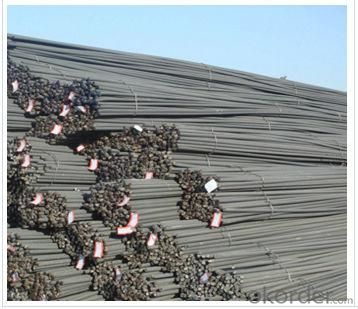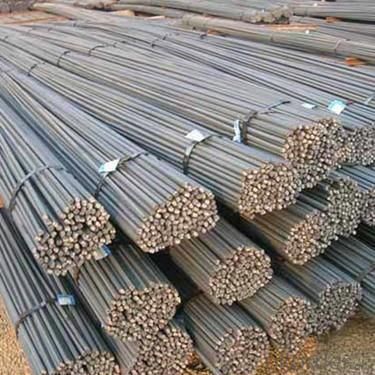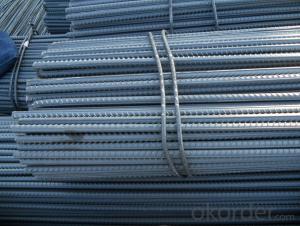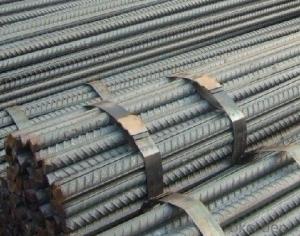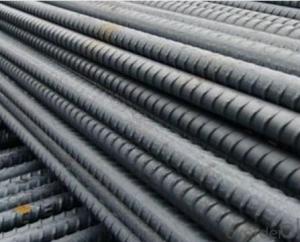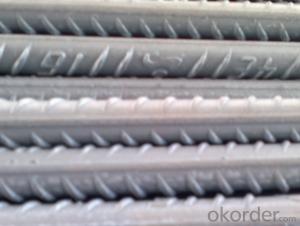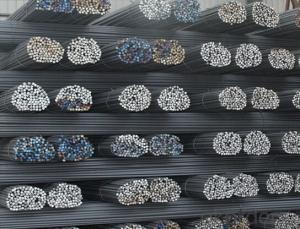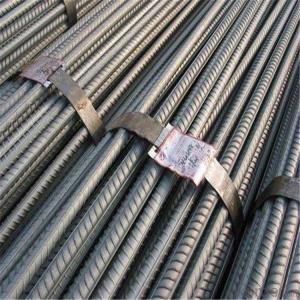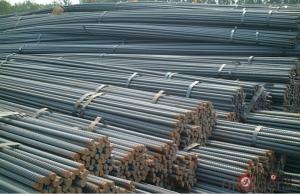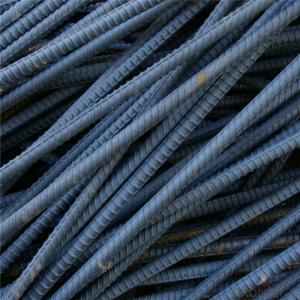BS4449-1997 deformed steel bar for construction
- Loading Port:
- Tianjin
- Payment Terms:
- TT or LC
- Min Order Qty:
- 25 m.t.
- Supply Capability:
- 100000 m.t./month
OKorder Service Pledge
OKorder Financial Service
You Might Also Like
Product Description:
OKorder is offering BS4449-1997 deformed steel bar for construction at great prices with worldwide shipping. Our supplier is a world-class manufacturer of steel, with our products utilized the world over. OKorder annually supplies products to European, North American and Asian markets. We provide quotations within 24 hours of receiving an inquiry and guarantee competitive prices.
Product Applications:
BS4449-1997 deformed steel bar are ideal for structural applications and are widely used in the construction of buildings and bridges, and the manufacturing, petrochemical, and transportation industries.
Product Advantages:
OKorder's deformed steel bar are durable, strong, and resist corrosion.
Main Product Features:
· Premium quality
· Prompt delivery & seaworthy packing (30 days after receiving deposit)
· Corrosion resistance
· Can be recycled and reused
· Mill test certification
· Professional Service
· Competitive pricing
Product Specifications:
Specifications of Middle Specification Steel Bar
1. Grade: Q235, SS400, A36, S235JR (With Boron)
2. Standard: GB, JIS, ASTM, BS
3. Diameter: 17mm—40mm
4. Length: As customer’s request, but we usually produce 6m and 12m.
5. Steel Grade: Carbon steel
6. Technique: Hot rolled or cold drawn
7. Inspection: SGS; ISO 9001:2000
8. Details about mass
Diameter | Mass | Diameter | Mass |
(mm) | (kg/m) | (mm) | (kg/m) |
17 | 1.78 | 26 | 4.17 |
18 | 2.00 | 28 | 4.83 |
19 | 2.23 | 30 | 5.55 |
20 | 2.47 | 32 | 6.31 |
22 | 2.98 | 34 | 7.13 |
24 | 3.55 | 36 | 7.99 |
25 | 3.85 | 38 | 8.90 |
Usage and Applications of Middle Specification Steel Bar
1. Middle specification steel bar is often used inconstruction and a large number of architectural and engineering structures.
2. And we can use this kind of product on the performance of the mechanical parts if the demand is not very high.
3. Some especial material steel round bar can be used for main shaft of steamer, hummer shank, with big section and supper force.
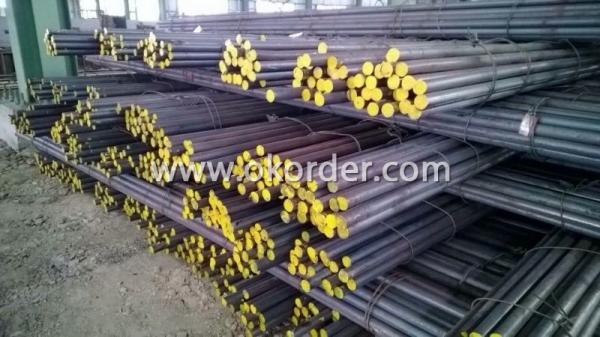
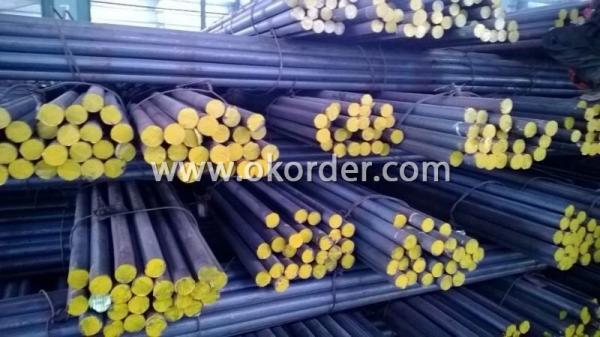
Packaging & Delivery of Middle Specification Steel Bar
Packaging Detail: All goods are packed in bundle with steel strips and shipped by break bulk vessel or container (depend on target market and different ports)
Delivery Detail: 45 days
Trade terms: FOB, CFR, CIF
MOQ: 25 tons per specification; we can negotiate the quantity if the specification is normal or we have stock of one specification.
Weight: Theprice invoicing on theoretical weight basis or actual weight basis depends on customer’s request.
Shipment: The shipment of bulk break or container is depends on customer’s request and the situation of the port of destination.
Documents given: Full set of original clean on board bill of lading; Original signed commercial invoice; Original packing list; Policy of insurance; Certificate of origin and what the target market needs.
Note: a. FOB Jinzhou can be USD 10 cheaper than FOB Tianjin. b. The risk of the commodity shall be transferred to the buyer from the moment of the commodity be loaded on board.
Production Flow of Middle Specification Steel Bar
We use advanced equipments like Electric Arc Furnace, Ladle Furnace and Vacuum Degasser to produce our products.
Our process is EAF+LF+VD+ Forged+ Heat Treatment
The flow of fabrication is Material prepare (billet) — heat up — rough rolling — precision rolling — cooling — packing — storage and transportation
Quality Assurance of Middle Specification Steel Bar
1. We will strictly inspect our production that we sold according to the customer’s request.
2. Quality should be in conformity with the specification of the manufacturer. Quantity and packing conditions should be in conformity with the term in the contract.
3. Should the packing found damaged, the buyer has the right to claim to the seller.
FAQ:
FAQ:
Q1: Why buy Materials & Equipment from OKorder.com?
A1: All products offered byOKorder.com are carefully selected from China's most reliable manufacturing enterprises. Through its ISO certifications, OKorder.com adheres to the highest standards and a commitment to supply chain safety and customer satisfaction.
Q2: How do we guarantee the quality of our products?
A2: We have established an advanced quality management system which conducts strict quality tests at every step, from raw materials to the final product. At the same time, we provide extensive follow-up service assurances as required.
- Q: How do steel rebars resist corrosion?
- Steel rebars resist corrosion through a process called passivation. When the steel is exposed to air and moisture, a thin layer of iron oxide forms on its surface, which acts as a protective barrier against further corrosion. This layer, also known as rust, prevents oxygen and moisture from reaching the inner layers of steel, thereby preventing further oxidation. Additionally, steel rebars are often coated with materials such as epoxy or zinc to provide an extra layer of protection against corrosion. These coatings act as a physical barrier between the steel and the environment, preventing contact with corrosive elements. Regular maintenance, such as cleaning and applying protective coatings, can also help to extend the lifespan of steel rebars and prevent corrosion.
- Q: What are the factors that determine the spacing of steel rebars in a concrete structure?
- The factors that determine the spacing of steel rebars in a concrete structure include the structural requirements, design codes and standards, load conditions, and the size and shape of the concrete members. Additionally, factors like concrete cover requirements, durability considerations, and construction constraints also play a role in determining the spacing of steel rebars.
- Q: Can steel rebars be used in structures with high resistance to creep?
- Steel rebars are suitable for structures that require high resistance to creep. They are widely utilized in reinforced concrete structures, contributing to their strength and durability. Creep refers to the gradual deformation of a material when subjected to continuous stress over time. Although steel does experience some creep, its creep rate is relatively low compared to materials like concrete or timber. Moreover, incorporating rebars in reinforced concrete structures aids in load distribution and mitigates the impact of creep by enhancing rigidity and minimizing stress on the concrete. Consequently, steel rebars can be efficiently employed in structures that demand resistance to creep, provided that they are appropriately designed and installed.
- Q: How are steel rebars measured and cut on construction sites?
- Steel rebars are typically measured using a measuring tape or a steel rule, ensuring accurate lengths are obtained. Once measured, the rebars are cut using a rebar cutter, which is a specialized tool designed to cut through the tough steel material. The cutter may be manual or powered, such as a hydraulic or electric cutter, depending on the size and quantity of rebars being cut. The process involves securely holding the rebar in place and aligning the cutter before applying force to make a clean and precise cut.
- Q: Can steel rebars be used in structures with limited construction space?
- Indeed, structures with limited construction space can accommodate the use of steel rebars. In reinforced concrete structures, steel rebars are widely employed to enhance tensile strength and bolster overall structural integrity. Given their diminutive size and pliability, steel rebars can be conveniently maneuvered and installed in cramped areas. They can be easily bent, cut, or shaped to suit the specific demands of the construction project. Moreover, steel rebars can be prefabricated off-site and subsequently transported to the construction site, thereby further facilitating their utilization in constrained construction spaces. All in all, steel rebars represent a versatile and pragmatic option for reinforcing structures with limited construction space.
- Q: Can steel rebars be used in water treatment plant construction?
- Yes, steel rebars can be used in water treatment plant construction. Steel rebars are commonly used as reinforcement in concrete structures, including those in water treatment plants. These rebars provide strength and durability to concrete structures, ensuring they can withstand the various stresses and loads imposed on them. Moreover, steel rebars are resistant to corrosion, which is essential in water treatment plants where exposure to water and chemicals is common. However, it is important to ensure that the rebars used in the construction of water treatment plants meet the required specifications and standards to ensure the longevity and integrity of the structures.
- Q: Can steel rebars be used in sports arena construction?
- Yes, steel rebars can be used in sports arena construction. Steel rebars are commonly used in the construction industry for their strength, durability, and ability to reinforce concrete structures. In sports arena construction, steel rebars are often utilized to reinforce the concrete foundations, beams, columns, and other structural elements of the building to ensure its stability and withstand heavy loads.
- Q: How do steel rebars contribute to the stability of a structure?
- Steel rebars contribute to the stability of a structure by providing reinforcement to the concrete. They enhance the structural strength and integrity of the building, by increasing its resistance to tension, compression, and bending forces. The rebars prevent cracks and failure in the concrete under heavy loads, improving the overall durability and safety of the structure.
- Q: Are steel rebars susceptible to rusting?
- Yes, steel rebars are susceptible to rusting.
- Q: What grade of reinforcement is used for cast-in-place floorslab?
- Now the more commonly used high-rise buildings are cast-in-place floorslab.The floor slab, of course, separates the floor and bears and transmits the floor load. At the same time, heat insulation, sound insulation, waterproof and so on.
Send your message to us
BS4449-1997 deformed steel bar for construction
- Loading Port:
- Tianjin
- Payment Terms:
- TT or LC
- Min Order Qty:
- 25 m.t.
- Supply Capability:
- 100000 m.t./month
OKorder Service Pledge
OKorder Financial Service
Similar products
Hot products
Hot Searches
Related keywords
